SECRETS OF THE DEAD
Scientists discover burials, symbols by extinct species in Cradle of Humankind
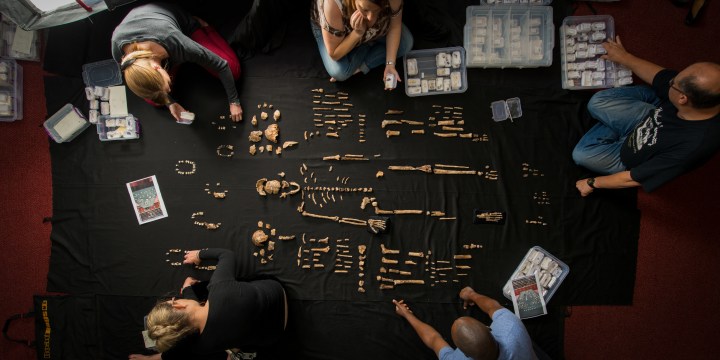
The findings by Professor Lee Berger change our ideas about brain size and what we think is human.
Burials found in the Rising Star cave system predate the earliest known interments made by humans by at least 100,000 years, making these the most ancient in the hominin record. And, these same hominins made engravings on the cave walls.
Deep inside the meandering caves they crawled, at great risk and with no reward, to dispose of their dead. They dug oval-shaped holes to bury their dead in. One body clasped a stone artefact – fossilised for eternity. Carefully the bodies were covered with earth. This is a burial.
There are pieces of charcoal on the cave floor and hearths to burn bones. They used fire.
On the hard dolomite rock they made deep cross-hatchings, squares, triangles, crosses and Xs. The surfaces appear to have been prepared and smoothed. Repeatedly a pointed or sharp tool was passed through the grooves. These were made on the rock above the burials.
All of this could be as old as 241,000 to 335,000 years. Or younger?
But these beings were not humans. This is a “cultural space of a non-human species”.
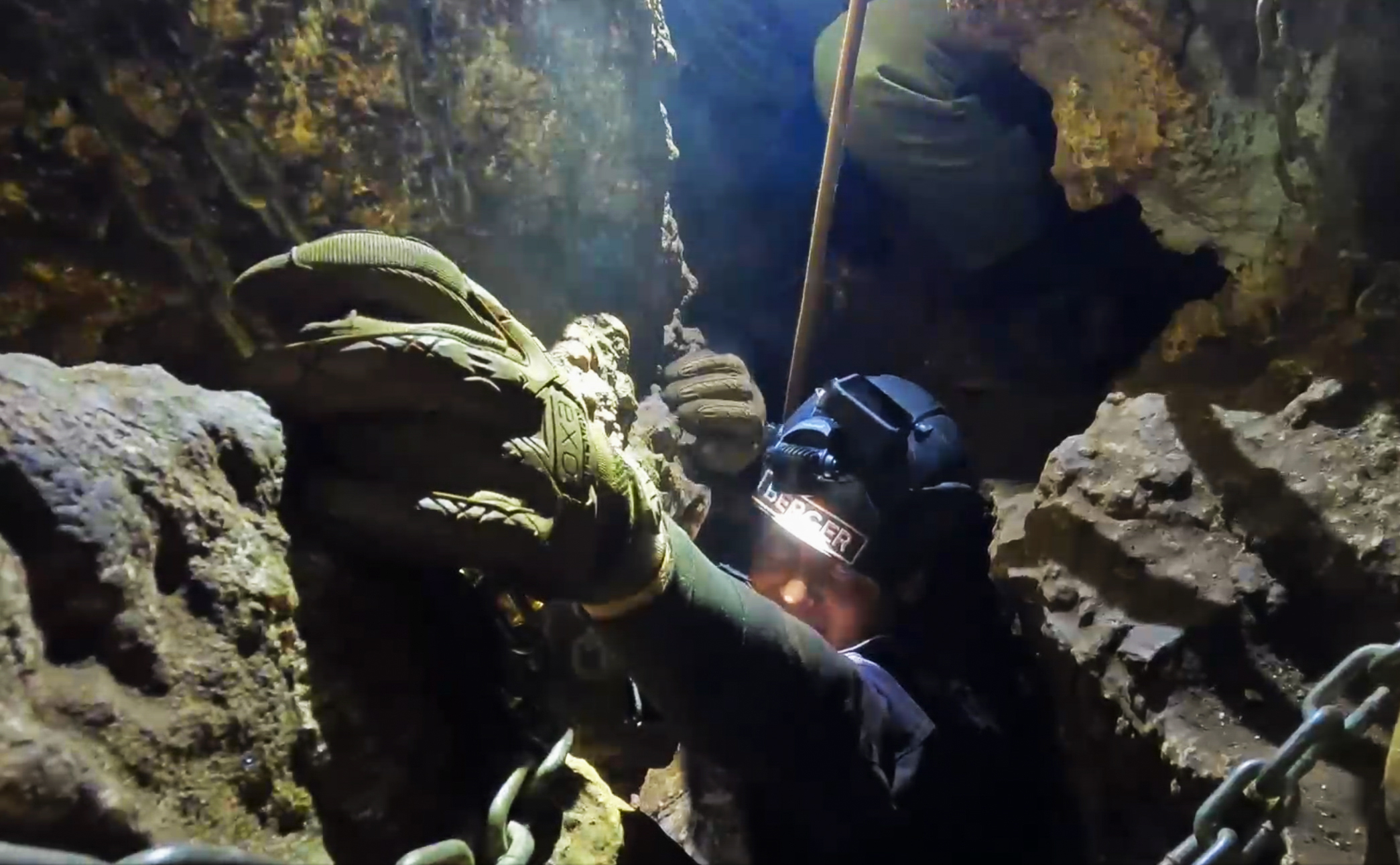
National Geographic Explorer-in-Residence and leader of the excavation expedition, Lee Berger, inside the last reach out of the chute labyrinth inside the Rising Star cave. (Photo Courtesy Lee Berger)
They were the small-brained hominins, Homo naledi, who lived in the landscape of what is today known as the Cradle of Humankind in South Africa. An extinct hominin species that buried their dead and used symbols for meaning-making – both behaviours that were thought to be exclusive to large-brained hominins.
These findings, in three papers, were accepted for publication in the journal eLife. The new discoveries were made by Professor Lee Berger, National Geographic Explorer-in-Residence and paleoanthropologist, an international team of experts in the Rising Star cave system, about 2km from Sterkfontein.
Professor John Hawks, a paleoanthropologist from the University of Wisconsin–Madison, said Rising Star is a unique site in its representation of many individuals across their entire anatomy across the lifespan – unlike most fossil sites that underrepresent many parts of the body, and underrepresent children and aged individuals.
The body is curled in roughly a foetal position, or a curl position, within it, and very much the way you often see pit burials of Homo sapiens.
The first excavations in the site began in 2013 and for years the team said there were “deliberate disposal of bodies”, since that was the only explanation for how thousands of bones could have ended up there. Which still may be the case for the majority of fossils found – the bodies were carried into the cave and laid down there. Yet, this is the first time they have used the term burial as this evidence was found in 2018.
Bodies of Homo naledi adults and several children estimated to be younger than 13 years were deposited in foetal positions, which suggests intentional burial of the dead. These were found in two areas in the cave system: The Hill Antechamber and the Dinaledi Chamber.
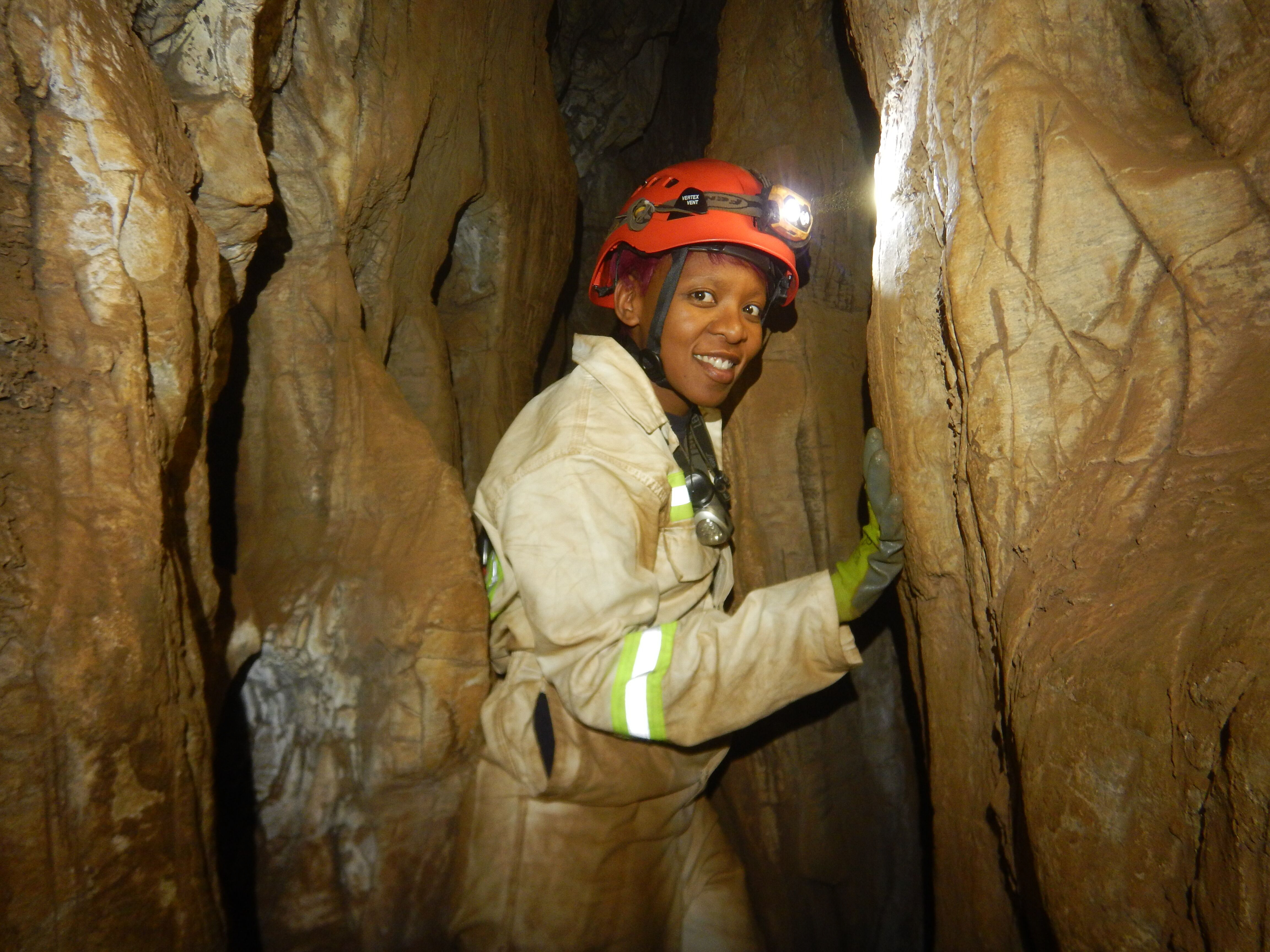
Archaeologist and biological anthropologist Dr Keneiloe Molopyane. As part of the core team of the Centre of the Exploration of the Deep Human Journey, Molopyane is currently the lead excavator of the Dragon’s Back expedition, at the Rising Star cave system. (Photo by Dirk van Rooyen)
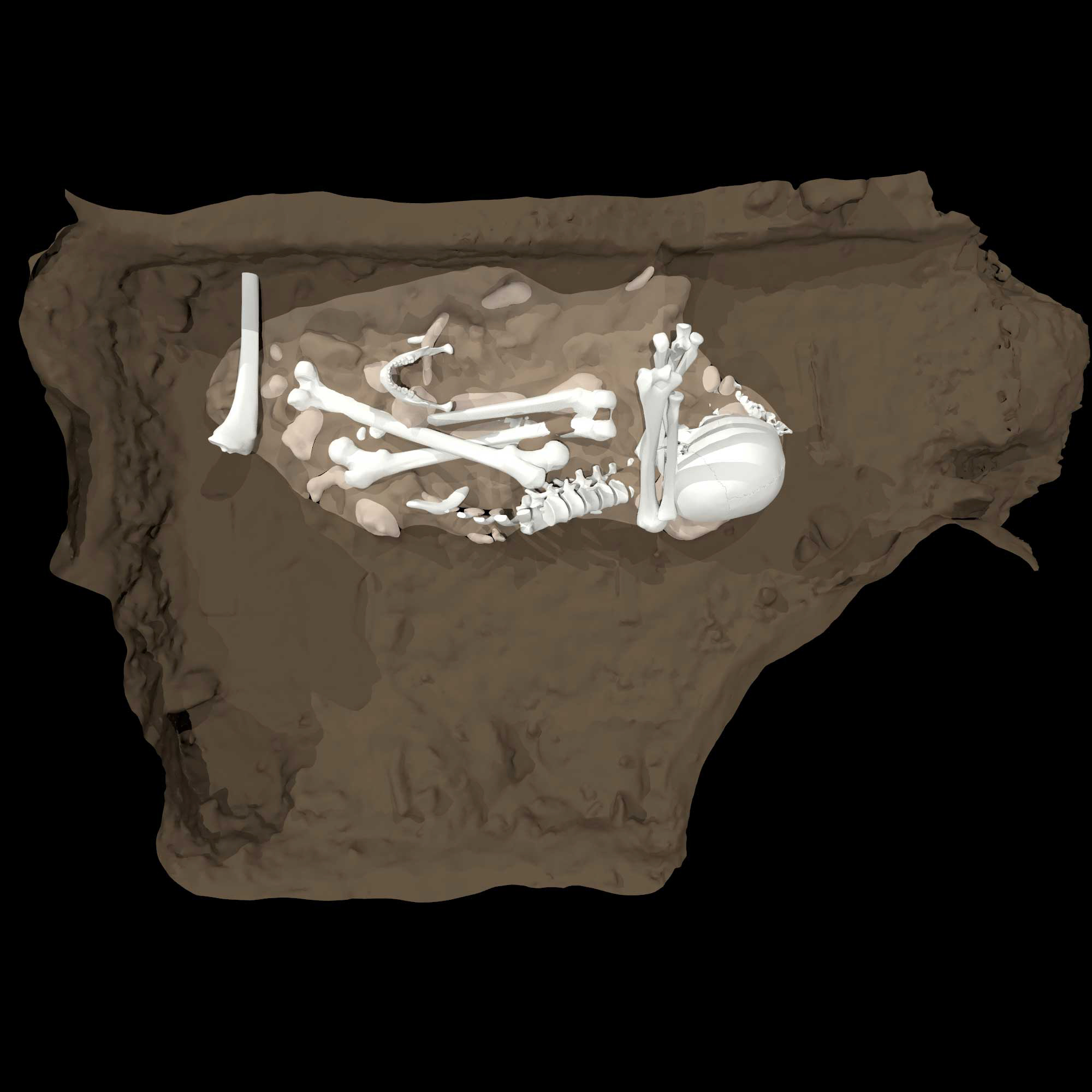
An artist’s reconstruction of the burial of an adult Homo naledi found in the Dinaledi Chamber at Rising Star by National Geographic Explorer-in-Residence Lee Berger. (Images from Berger et al, 2023)
With one of the burials in the Dinaledi Chamber there are overlapping burials. Berger explained: “You can see two burial features here, but the main one being the lower one, which has a dominant single body in it of an adult individual with a discreet oval that has been dug into the surface, breaking through sedimentary layers… demonstrating that it is a dug hole. And the body is curled in roughly a foetal position, or a curl position, within it, and very much the way you often see pit burials of Homo sapiens.”
The burial feature in the Hill Antechamber had been taken out intact in a plaster jacket and CT scanned at the Synchrotron facility in France. “What’s important is that this burial has been dug horizontally into a slope, so demonstrating first that it is not water-laid. It’s been dug into the slope. You can very distinctly see the base of it.
Read in Daily Maverick: ‘Greatest age of exploration’ — fossil finder Lee Berger recalls personal journey as world awaits ground-breaking new find
“Also, importantly, you can see that this burial has depth, demonstrating it’s not a body that died in a depression or hole. It was a whole body that was covered in dirt and then decayed within the grave itself.
In this burial there are a number of individuals – the main one is a child and the younger one could be a foetus. One holds a tool-shaped rock in his/her hand, but this needs further testing.
“We feel that they have met the litmus test of human burials or archaic human burials and the most ancient human burials, and therefore describe them as graves or burials by the nonhuman species, Homo naledi,” Berger said.
“Remember that no humans have ever touched this, and it still remains in the rock… What we didn’t do was strip this place out, and we could have done that. And I think that would have been typical of many behaviours of paleoanthropologists in the past. We have left large amounts of this evidence in place. There are clearly multiple other burials in this area unexcavated at this time,” he added.
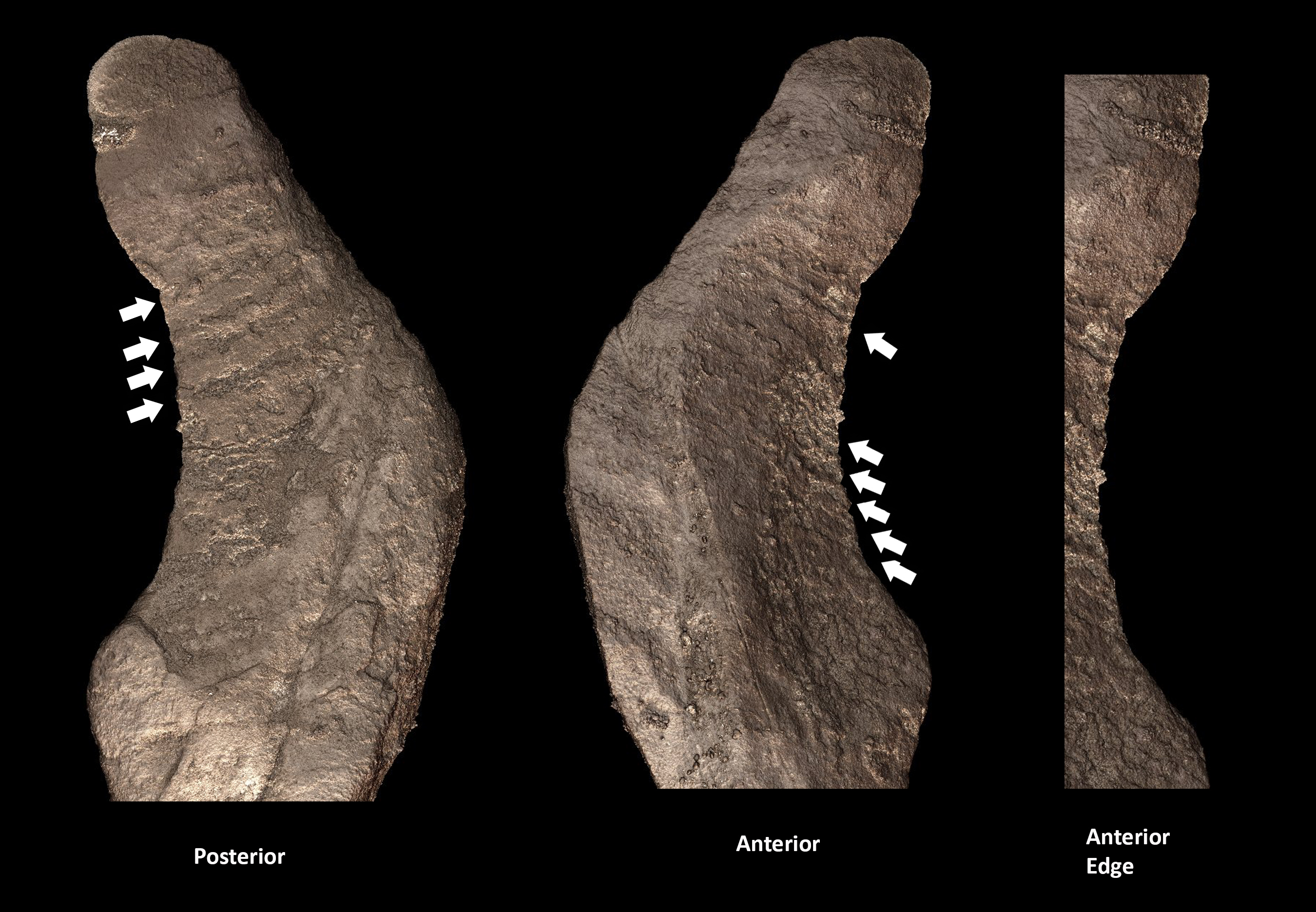
The ‘tool-shaped rock’ described in Berger et al positioned in or near the hand of a Homo naledi child buried in the Hill Antechamber. The arrows point to possible serrations and lines which are possible evidence of modification or use of wear on the edge of the rock. (Images from Berger et al, 2023)
“We have found a cultural space of a non-human species. They have intensely altered this space across kilometres of underground cave systems… It is not our space. It is not our space necessary to appropriate.”
Dr Teebgo Makhubela, a geologist at the University of Johannesburg, said: “I’m hoping that [with] this work, you know, we’ll start to ensure that humans are not always in the centre. Human evolution, you know, just as other species, is still also evolving, is driven by the different species.
“What we know today and what we are today is as a result of other species. Whether human-related or not.”
‘Designs that had meaning’
The creation of similar symbols has also been documented among Neanderthals (Homo neanderthalensis) from almost 60,000 years ago and early Homo sapiens in South Africa from 78,000 years ago.
Such intentional designs, which are widely interpreted as signifying, recording and transmitting information in a durable manner, are recognised as a major cognitive step in human evolution.
“To give you an idea of some of the depth of the engravings into this rock: this is not an easy process, but it was a process that was done over a period of time. We don’t know how long that is, we are going to be attempting to date this material,” said Berger. But dating this would be difficult.
Could it have been made by humans?
“I think the simple answer is by association and context – humans don’t venture into deep caves in sub-Saharan Africa. They do it rarely, in other places, particularly not into spaces like this.
“There’s no evidence of humans from the Iron Age, or others, that have ventured in these spaces, other than the people that are listed by name in the back of the symbol paper that have entered that. We know everyone. We know none of them did these engravings.
“These are not the kind of graffiti or engravings humans do. So there’s no evidence of humans in the proximal spaces other than our entry into this space. There are burials of this species directly below these. These are graves they dug. These are engravings that are not done in one sitting. They’re done over time.”
Small brain and complex behaviour
Professor Agustín Fuentes, a National Geographic explorer from Princeton University, said: “[We] should try to understand how humans became human. This is one of those things that’s sobering and humbling.”
Homo naledi’s brain was about a third of the size of a living human’s.
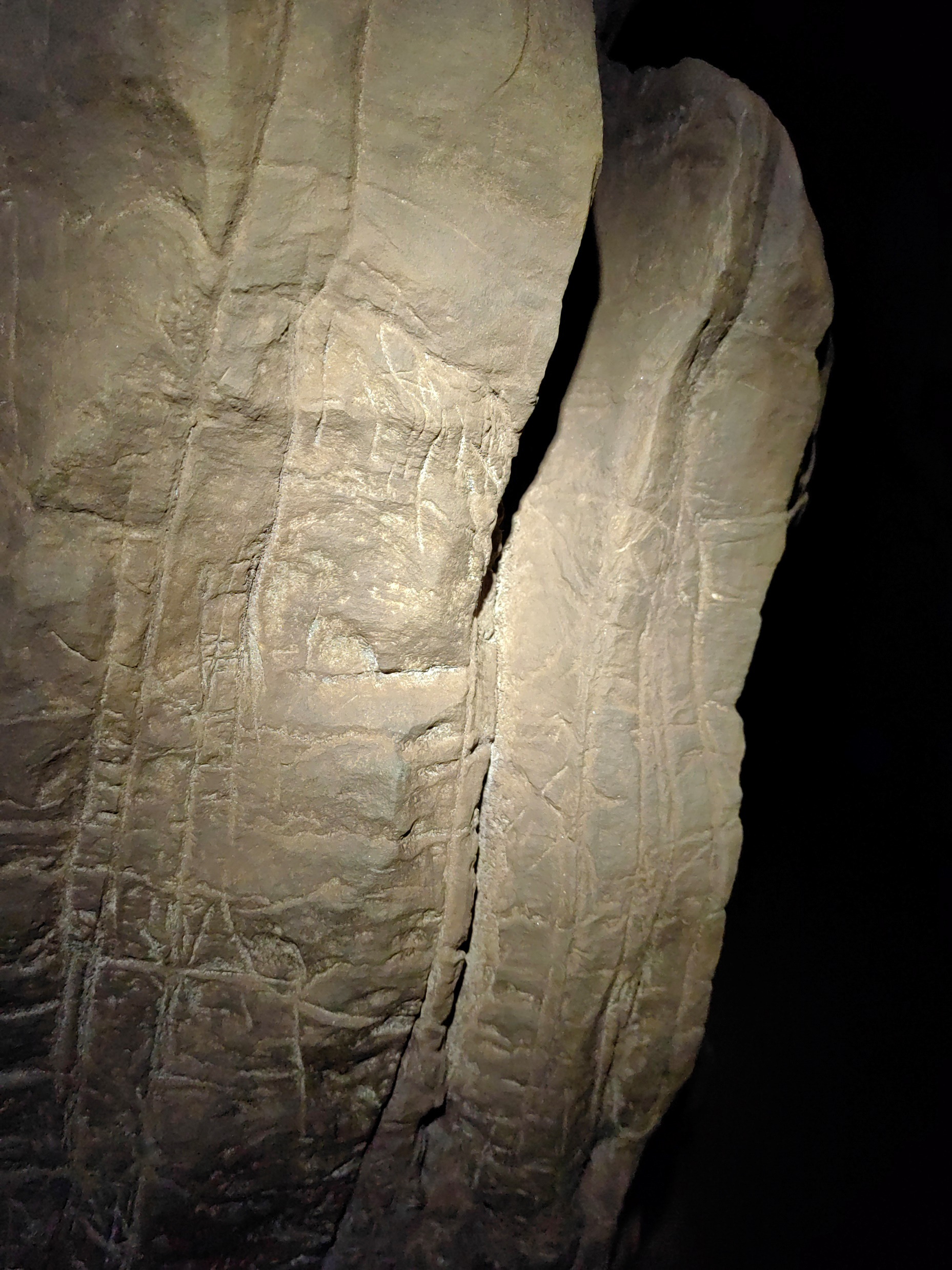
Discovered on 28 July 2022: An image of Panel B in the Hill Antechamber exhibiting numerous engravings and etchings on the ancient dolomitic wall. The panel shows repeated etchings likely done over a considerable period. The etchings include geometric figures such as squares, ladders, triangles, crosses and Xs. (Image from Berger et al (2023b)
“The bottom line for me, very interestingly, is: it takes the brain away as the focus. Big brains are still important. They just do not explain what we thought they explained, and that means we need to step back, take humans a little bit off the pedestal yet again, and try to understand what are the dynamic processes and what are the social and community emotional dynamics that allow this kind of complex behaviour without having this big, complex brain,” he said.
‘My adrenaline is pumping and my mouth is dry’
Berger was unable to enter the deep, narrow tunnels of the cave and eventually lost 25kg to get in. “It was the most awful and wonderful experience in my life… It is every bit as horrible as I’ve described for years. I thought I’d never be in the cave. Getting through that chute labyrinth is an extraordinary experience. I almost died coming out of there.
“I think an important part of that, though, is that the journey would not be nearly as difficult, I think, for Homo naledi. Their heads are smaller, they’re thinner. They’re more powerfully built than us.”
Dr Keneiloe Molopyane, a National Geographic explorer, archaeologist and biological anthropologist from the University of the Witwatersrand, is one of the lead excavators. She explained how the cave not only has tiny spaces where they have to crawl on their bellies, but dangerous heights and ridges too.
Superman’s Crawl and Dragon’s Back were among the names they gave these spaces.
“I’ve sat there [before the chute labyrinth] many, many times thinking to myself: What have I done? I’m contemplating my choices in life. I want to call my mum… And I mean again, my adrenaline is pumping and my mouth is dry, and I need that last sip of water, the last sip to get me through what I’m going to see next.. the chute labyrinth, the tiny space that separates the adventurous from the not-so-much adventurous that we go on to make amazing discoveries.”
That dreaded labyrinth is essentially a crack in the ground with large dolomite points sticking out of it, grabbing you, preventing you from falling to your death as you descend; and of course you have to use these points to help you ascend to the surface.
DNA is next
Hawks said they are doing biochemical testing on Homo naledi material. Attempts several years ago to find DNA preservation in bone material from the Dinaledi Chamber had not yielded anything, but now “we are doing other kinds of biochemical retrieval from the sample, and we will have biochemical results to report”.
“With these burials being left in place, we will be doing sediment sampling to assess whether there is DNA preservation and sediment, and one of the reasons to keep things intact is to keep that sedimentary context exactly as it is.
“This is irreplaceable evidence. We do not know whether we will excavate anything else, and in that context, we’re going to recover as much data from it as is humanly possible without further excessive disruption.
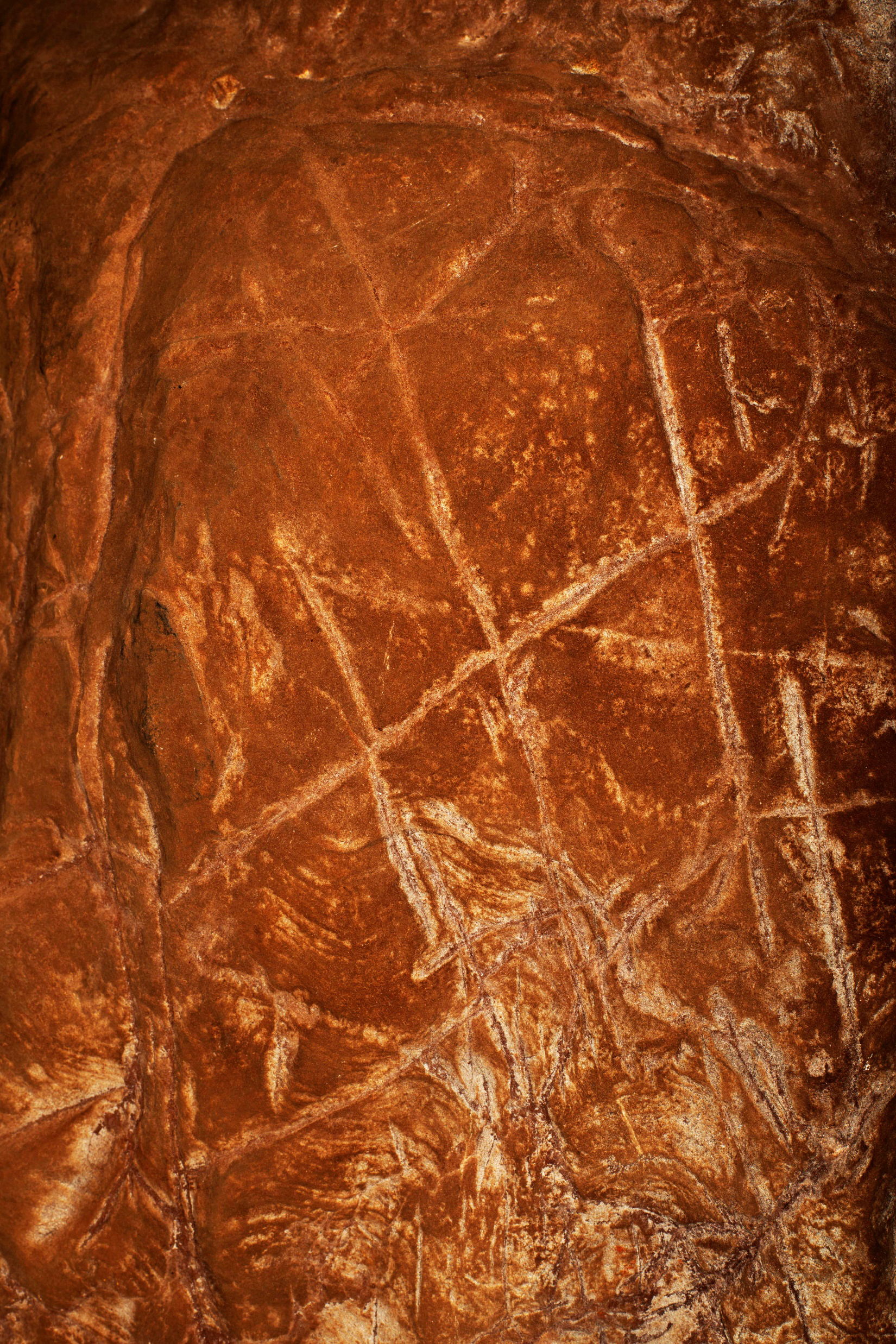
An image of the Panel A crosshatch engraving in the passage between the Hill Antechamber burial chamber and the Dinaledi Burial Chamber in the Rising Star cave system. The image is taken using a polarising filter to highlight the various non-natural etchings on the surface. The roughly horizontal wavy lines at the bottom of the image, which are crossed by the engravings, were caused by a fossil algal stromatolite found in the native dolomitic rock. Earlier etchings can be seen behind the crosshatch, possibly having been obscured by covering the surface with cave dirt as described in the scientific papers. (Image from Berger et al, 2023)
“With other kinds of analyses, we’re obviously interested in chemical, biochemical [and] other kinds of dating analyses on many parts of the cave system, including places where we have evidence for fire, including the engravings, and that evidence will continue to accumulate over the next several years.”
And considering all this, could Homo naledi be younger?
Said Berger: “Obviously naledi existed before this. I do believe that there is emerging evidence that we will have to consider that some of the Homo naledi remains come closer to us in time. There are ongoing tests led by people like Tebogo, but it’s going to require large teams, and a great deal of effort, to expand across all of these utilisation sites to establish whether Homo naledi comes closer to us in time.
“And if so, how close?” DM






















 Become an Insider
Become an Insider
What wonderful discoveries the Naledi site is continually revealing – if ever one had reason to doubt evolution, read more and be in awe of the existence of the Homo Naledi prehumans.
I do hope they find viable DNA eventually. This may show that the are not only our cousins but maybe a branch of our ancestors. I personally, would be proud if it is discovered that there is genetical proof of this and find that modern man may be part of the great Naledi story presently unfolding.
This is what I love about palaeontology: there’s always more things to find. And as we find it, our idea of what it is to be human has to expand to encompass other species. I would hope that this might knock the sense some folk have of us being unique, right out of us – but in a world where some still refuse the planet is spherical, that’s wishful thinking.
They were the small-brained hominins, Homo naledi.
But another small-brained Homo naledi (Pandor) is still well and alive!
Sharp!
A really remarkable discovery, which may well be the link between the Animal kingdom and m0dern mankind